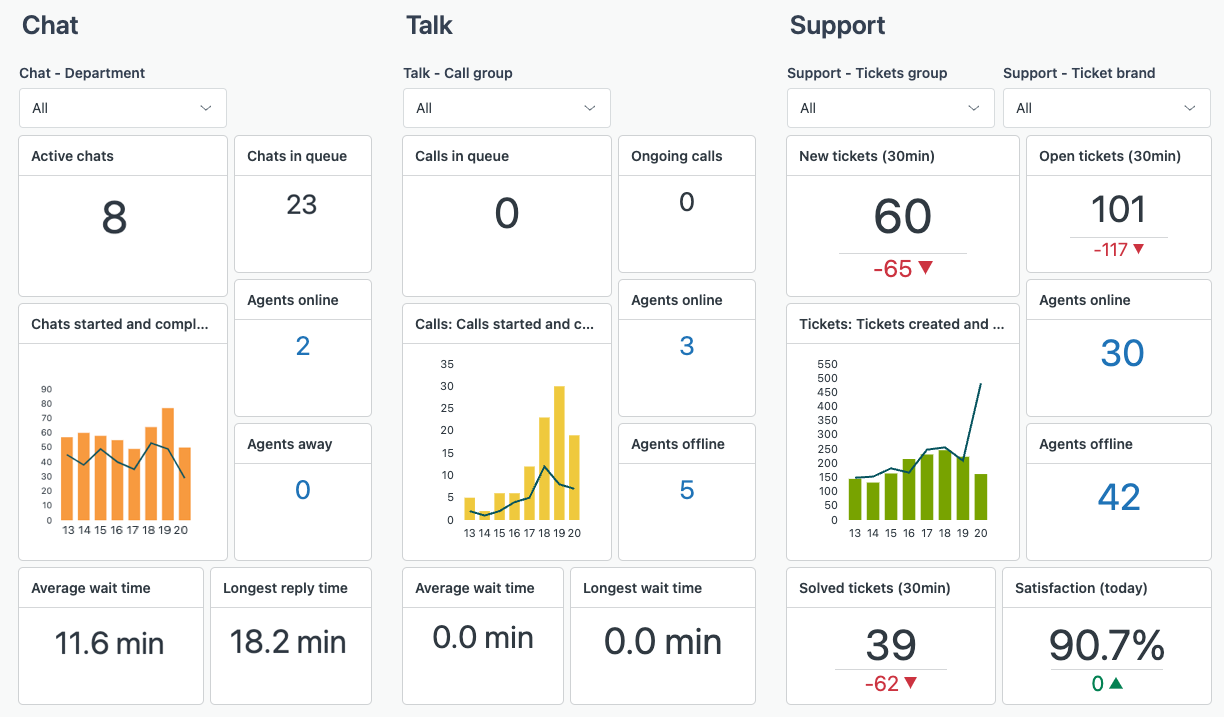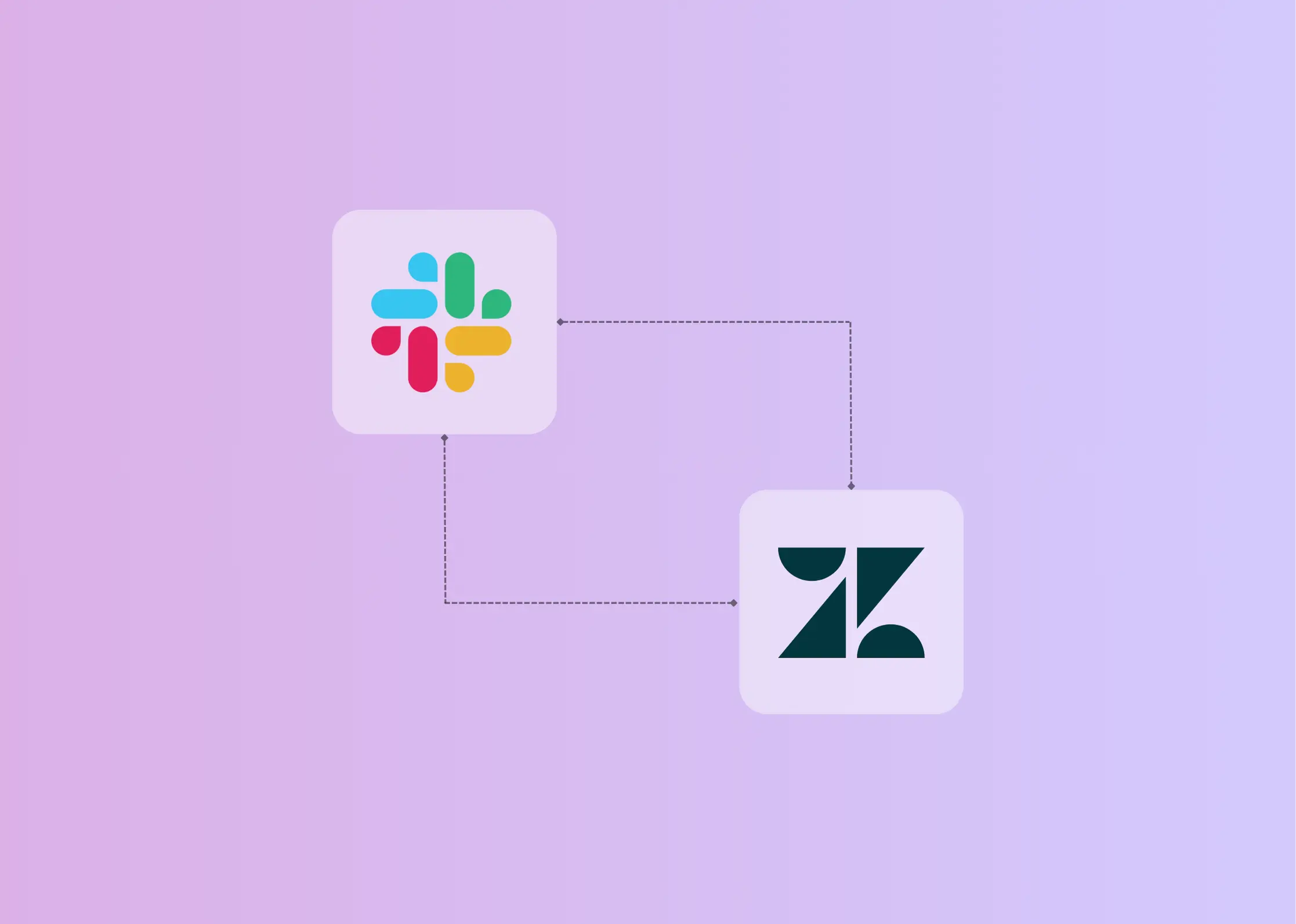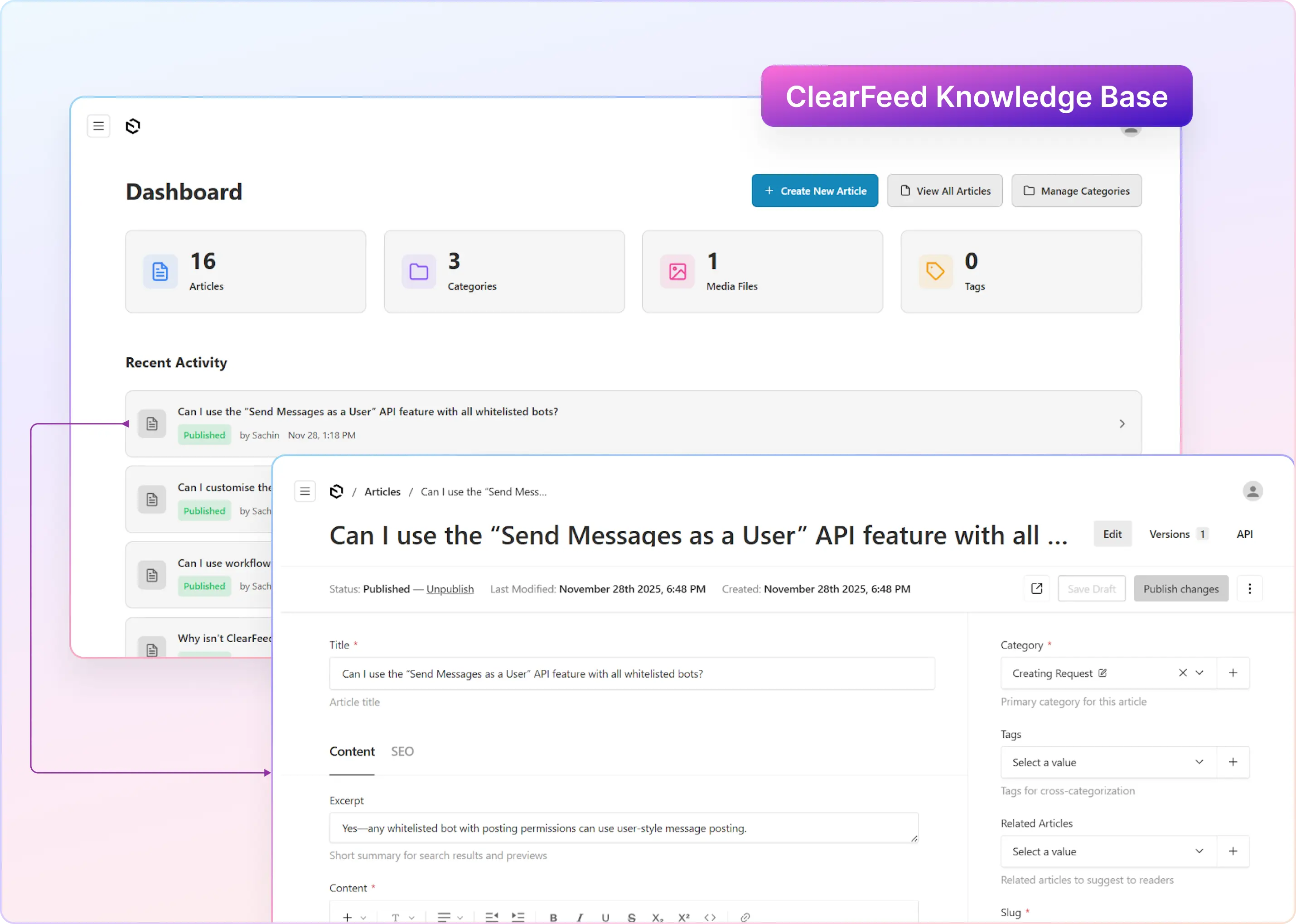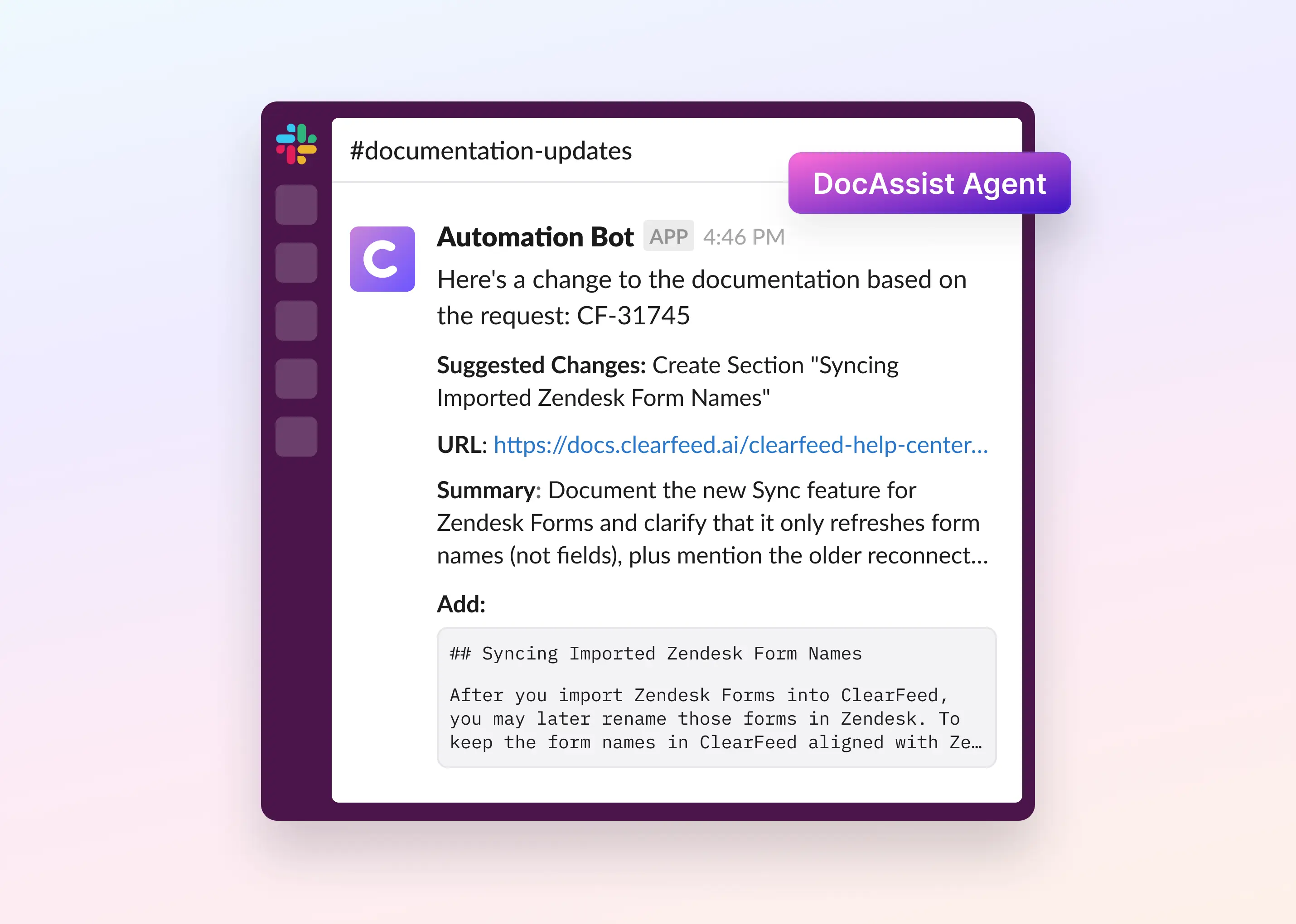If your support team relies on Zendesk and spends most of their day inside Slack, you’ve likely faced this question: “Should we stick with a portal-based tool like Zendesk or switch to a Slack-native ticketing system? Which one is better?”
Zendesk is a mature, feature-rich platform designed for structured support, ideal for managing high volumes of tickets across multiple channels, including email, chat, web, and phone. However, Slack-native solutions bring speed, collaboration, and real-time context directly into the channels your team already uses.
In this guide, we provide a clear and practical framework to help you make an informed decision. You'll learn:
- Where each system performs best
- How to decide based on your team’s size, workload, and support channels
- And if you’re undecided, how can both work together
Why Support Teams Are Adopting a 'Slack-First' Approach
B2B support is evolving fast. Slack is now the preferred channel for high-touch, real-time customer interactions, particularly in the SaaS sector. Traditional models based on email and web portals can't keep up with the speed and transparency customers now expect. Here's why more teams are shifting to a Slack-first support model:
- Your Customers Are Already in Slack
Over 100,000 organizations now use Slack Connect to work directly with vendors, partners, and service providers. For many, it has replaced email as the default support channel.
Offering support directly inside Slack means customers can get help without having to switch tools, leading to faster resolutions and higher satisfaction.
- Context-Switching Is Killing Agent Productivity
Support agents often juggle multiple tools: Slack for conversations, Zendesk for tickets, Jira for engineering handoffs, and Confluence for docs. Constantly switching between them drains focus and slows response times. Studies show it can reduce productivity by as much as 40%.
Slack-native platforms like ClearFeed solve this by enabling agents to manage conversations, tickets, SLAs, escalations, and even KB content, all within Slack. With fewer tools to switch between, agents can respond more quickly and focus more effectively.
- AI Fits Naturally in Slack
The new wave of support tools is AI-first and Slack-native. Platforms like ClearFeed bring GPT-powered intelligence directly into your threads to assist agents in real-time.
Examples of what AI can now handle inside Slack:
- Auto-tagging (e.g., bugs, feature requests, how-tos)
- Smart reply suggestions from your internal knowledge base
- Instant ticket summaries to reduce ramp-up time
- Intent detection, urgency scores, and sentiment analysis
This cuts manual effort and improves speed without compromising quality.
- Shared Visibility Improves Alignment
Slack-native ticketing offers real-time visibility to everyone involved—Support, Engineering, Product, and Customer Success.
With ticket status, SLA timers, and ownership all visible right within the thread, there’s no need to hunt for updates or dig through dashboards. This shared context accelerates collaboration and reduces resolution times.
Now, let’s see where Zendesk truly excels and why it remains the preferred choice for enterprise-grade support.
Where Does Zendesk Stand Out?
Zendesk is the default choice for many enterprise support teams, and for good reason. They're designed for structured, scalable support across multiple channels, including email, chat, phone, and web forms.
Here’s what sets them apart:
1. Omnichannel & Branded Portal Support
Your customers reach out via email, chat, phone, web forms, and even Twitter. Zendesk consolidates everything into a centralized inbox, ensuring that every request is tracked and resolved, regardless of the scale.
What Zendesk offers:
- Unified inbox for all customer conversations
- SDKs and web widgets to embed support in apps and websites
- Customizable Help Center for scalable self-service
- “Side Conversations” to collaborate with teammates via Slack/email without switching tools
- Consistent workflows across geographies, channels, and time zones
2. Enterprise-Grade SLA Rules & Escalations
When Service Level Agreements (SLAs) are tied to customer tiers, contracts, or compliance, missing one isn’t an option. Zendesk provides precise control to define, track, and enforce SLAs.
What you can configure:
- Multiple SLA policies per customer/product
- Time zone-aware business hours and calendars
- Trigger-based escalations for time-bound responses
- Skill-based routing to auto-assign tickets to the right agent
3. Advanced Reporting & Forecasting (Zendesk Explore)
At scale, you don’t just need metrics; you need visibility into trends, bottlenecks, and future needs. Zendesk Explore helps with that.
What Zendesk Explore offers:
- Detailed reports on agent performance, Customer Satisfaction (CSAT), first response time, and resolution time
- SLA breach insights by policy, customer, or geography
- Forecasting tools to predict future ticket volume, agent workload, and budget requirements based on historical trends
- Custom dashboards for leadership visibility and team-level reviews
If your support team handles thousands of tickets daily, this level of analytics is crucial for making informed resource allocation decisions.
Here’s an interface showing Zendesk Explore live dashboard, centralizing ticket insights and predictive forecasting:

4. Smart Automation & AI at Scale
When your team handles hundreds (or thousands) of tickets a day, automation becomes essential. Zendesk optimizes repetitive tasks to maintain consistency and speed.
What Zendesk offers:
- Macros, triggers, and custom views to automate tasks like tagging, routing, and responding to tickets.
- Zendesk AI deflects FAQs by suggesting relevant help articles (e.g., “How do I reset my password?”).
- AI tools, such as auto-categorization, intent detection, and sentiment analysis, can effectively route and prioritize tickets.
- Conversation summaries help agents quickly catch up on long threads.
5. Compliance, Security & Role-Based Access
In regulated industries such as finance, healthcare, or SaaS, compliance and data security are paramount. Zendesk is built with enterprise-grade security features to meet these demands.
Security Features:
- Role-based access controls what agents, admins, and users can see or do, ensuring only authorized access to sensitive data.
- Audit logs provide full traceability for compliance.
- Secure, scalable integrations via “Zendesk Sunshine.”
- Certifications: ISO 27001, SOC 2 Type II, HIPAA, GDPR – aligned with global security standards to ensure compliance and safeguard customer data.
Limitations of Zendesk
Despite its power, Zendesk isn’t ideal for every support model, especially those that operate primarily in Slack.
- Context switching between Slack and Zendesk introduces latency.
- Slack Connect users expect in-slack support, not redirects to portals.
- Setup and admin overhead can feel heavy for lean teams with focused use cases.
Now, let’s look at the other end of the spectrum: Slack-native ticketing tools like ClearFeed, which is built for real-time collaboration and speed.
Where Do Slack-Native Ticketing Tools Stand Out?
If your team already lives in Slack, why force them to switch between tools just to manage tickets? That's the core advantage of an ideal Slack-native ticketing system: it brings entire support into the same space where your team already collaborates. Here’s where a Slack-native tool truly excels:
1. Threads as Lightweight Tickets
Instead of routing requests through forms or portals, Slack-native tools enable you to keep track of the status of each thread and instantly convert any message, whether it's a direct message (DM), public channel, or Slack Connect, into a support ticket.
What you get:
- One-click ticket creation from any Slack message
- Ticket details (status, assignee, tags) are visible in the thread
- End-to-end support context maintained in Slack
No more lost requests or back-and-forth between systems. Everything stays in flow.
2. Live SLA Timers & Alerts in Threads
SLA compliance isn't buried in a separate dashboard. With Slack-native tools, timers and reminders are embedded directly in the thread. Agents and requesters can view SLA status in real-time without interrupting their workflow.
What you get:
- Real-time SLA countdowns are visible to agents and requesters
- Breach alerts sent inside the same channel or thread
- Instant escalations are triggered and visible to relevant stakeholders (e.g., if a critical customer issue isn't resolved, the support manager is instantly notified in Slack).
This maintains high accountability and tight response times, all without leaving the Slack platform.
3. Built-in AI for Faster, Smarter Responses
Many Slack-native systems now come with integrated AI to reduce manual effort and increase speed. For example, ClearFeed uses GPT-powered AI to streamline responses and reduce manual overhead. This accelerates triage while preserving quality.
With AI in the loop, your team can:
- Instant summaries of long or cluttered threads
- Smart reply suggestions based on internal knowledge bases (E.g., Notion, Confluence)
- Auto-tagging and classification based on tone, intent, or urgency
For example, a message like “I’ve been waiting for days with no update” is automatically tagged as “Urgent” and routed to the escalation queue for immediate attention.
4. Zero-Friction Cross-Functional Collaboration
Since your team already works in Slack, collaborating with product, engineering, or ops happens naturally. No training or ticketing system onboarding is required.
What you get:
- Cross-functional teams can jump into threads, leave context-rich replies, and stay in the loop
- Escalations, clarifications, and approvals happen in real time in the same thread
This is especially useful for SaaS companies and internal helpdesks that rely on input from cross-functional teams. Products like ClearFeed go one step further and offer private Triage channels where public conversations are mirrored. This allows team members to collaborate privately on customer threads in Slack.
Limitations of Slack-Native Ticketing
- It's not ideal if your primary channels are email or phone.
- Thread-first workflows can feel unfamiliar to Zendesk and Freshdesk users, as they are accustomed to structured tickets with predefined forms and fields. In Slack, support often begins as casual thread messages, which can initially feel less organized.
- Since Slack-native tools focus on conversations rather than analytics, advanced reporting often requires additional setup to match the depth of an enterprise's needs.
Hybrid Option: Zendesk + Slack-Native
You don’t have to choose one over the other. Many modern teams use both, keeping Zendesk for structured reporting and SLAs while handling conversations in Slack. ClearFeed makes this possible by acting as the bridge between conversational support and structured ticketing.
How It Works:
ClearFeed acts as a two-way bridge between Slack and Zendesk:
- A user sends a message in Slack (public, private, or Slack Connect)
- ClearFeed turns it into a Zendesk ticket automatically
- Updates sync both ways: between the Slack thread and the Zendesk ticket
- Agents and customers stay in Slack; reporting, SLAs, and compliance stay in Zendesk
This way, support feels fast and familiar while leadership still gets the data and compliance that Zendesk provides. In short, with ClearFeed, you don’t have to choose between fast, conversational support and structured, trackable workflows. You get the speed of Slack, the power of Zendesk, and a seamless bridge in between. Try ClearFeed today to automate ticketing, boost response times, and finally, make Slack + Zendesk work like one system.

















